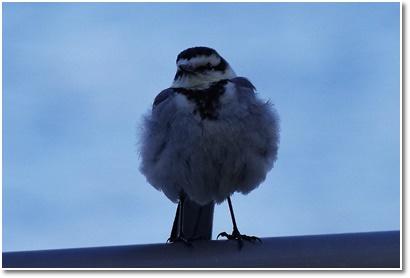This winter, when birdwatching at Ishikawajima Park entered its fourth year, I feel different from the usual year. The small number of winter birds coming from Siberia and northern China. Waterfowl northern pintail usually has 25,6 to 17,8 birds, but this year it is 7,8 birds. Eurasian wigeon usually has three groups of 14 or 5 birds, but this year only 12 birds. Also, little birds daurian redstart and dusky thrush are hard to appear.
Why is it?
Many wintering places are under construction this year, and there are many rats nearby due to the relocation of Tsukiji Market, so there are many raptors that feed on them, and birds and water birds are moving.
In such an environment, I would like to introduce the birds that I met this winter.

 Eurasian wigeon with northern pintail (the head is yellow)
Eurasian wigeon with northern pintail (the head is yellow)
northern pintail and Eurasian wigeon. Both act in groups of 14 or 5 every year. In particular, Eurasian wigeon was so cautious that he only came to the park on a rainy day with little crowds. But perhaps because of the small number this year, it may be mixed with northern pintail, and even on such a sunny day, four birds came close to people. This is a rare thing! That's right.
 northern pintail
northern pintail
 Eurasian wigeon
Eurasian wigeon
I'm thrilled to be able to shoot Eurasian wigeon so close.
Next, I would like to introduce it to you. Only one bird comes every year. It's not a long stay, so I'm lucky to meet you. It's endangered species and it's just a few birds in the surrounding Kasai Rinkai Park Wild Bird Garden.
 The grebes I met on January 24
The grebes I met on January 24
When you dive to catch food, you'll die. Come here! Come! If you think about it, it will rise to a very close distance! !Please pay attention to your head. A little crown is coming out. Summer hair increases more, but unfortunately it is not visible in Japan.
Next is mallard, which shines in the morning sun at the base of Ukishima.
 mallard
mallard
Every year in mallard, only one pair is observed here in Ishikawajima Park, but many are found in Hamarikyu Gardens. It seems that mallard is the one who can eat the most delicious duck with no smell. At the hunting ground with many kinds of ducks, you must have been targeted first.
By the way, the birds that can be seen all year round could also observe cute appearances.

Hakusekirei

Three sparrows?
It's a "mofumofu" figure unique to the cold winter.
Winter birds in Ishikawajima Park. This year's situation is a bit nervous, but please enjoy a walk while looking for wild birds.

